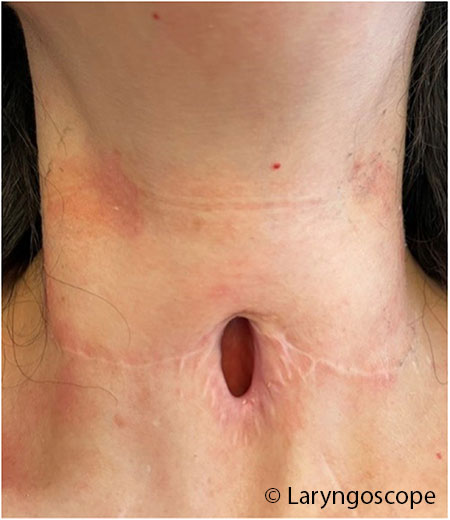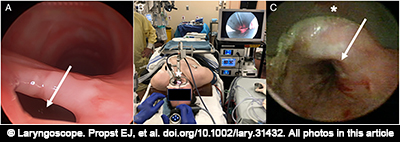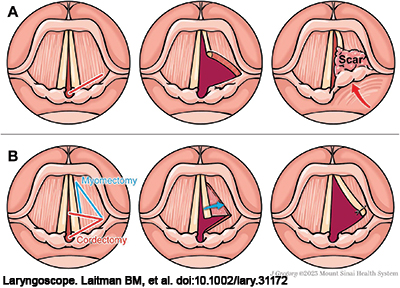The cellular landscape of the mouse model larynx contains multiple macrophages and secretory epithelial cell populations; commensal microbiota has an extensive impact on the laryngeal immune system.
Combined Endoscopic Approaches Can Provide Maximal Exposure to the Infratemporal Fossa
Combining minimal access endoscopic approaches to the ITF can provide significantly greater exposure than an isolated endoscopic transnasal transpterygoid approach (EETA), thereby providing enhanced access to address lesions with extensive involvement of the ITF.
Awake Orotracheal Intubation Shown Successful in Four Patients with Laryngeal Cancer
Awake videolaryngoscopy intubation is an excellent strategy to adopt in patients with laryngeal cancer, particularly when potentially complicated intubation is expected.

How To: A Novel Hybrid Procedure Combining Resection and Tracheoplasty for Complex Laryngotracheal Stenosis
This study describes the successful use of a hybrid resection and laryngotracheoplasty procedure that maximizes airway luminal patency in adults with successful decannulation.
Awake Orotracheal Intubation Shown Successful in Four Patients with Laryngeal Cancer
Awake videolaryngoscopy intubation is an excellent strategy to adopt in patients with laryngeal cancer, particularly if potentially complicated intubation is expected.

How To: Suspension Microesophagoscopy for Endoscopic Suture Closure of Pediatric Tracheoesophageal Fistula
This study is about a patient for whom suspension microesophagoscopy was performed and describes how this approach allowed for improved management.

Established Adult Tracheostomy Tube Exchange: How Often Is Enough?
The timing of tracheostomy tube changes should be tailored to each individual case.
Recurrent Laryngeal Nerves Recover Function with Neoadjuvant Treatment of Locally Advanced Thyroid Cancer
Advanced Thyroid Carcinomatous neural invasion can be a reversible process, and recovered nerves may demonstrate normal morphology and electrophysiological activity.
19th Century Laryngologist Effectively Saved the Brooklyn Bridge
Built in the 19th century, the East River Bridge employed a suspension design and materials on a never-before-seen scale. Its masonry towers required the use of pressured caissons for excavation. When workers began collapsing after exiting the caisson at day’s end, a laryngologist was called in to save the project.

How To: Transverse Cordotomy with Thyroarytenoid Myectomy for Bilateral Vocal Fold Immobility
Currently, Bilateral Vocal Fold Immobility (BVCP) is often treated by transoral CO2 laser-assisted transverse cordotomy. Still, this procedure can lead to subsequent scarring at the wound bed, resulting in re-narrowing of the airway and poor voice. Transverse cordotomy with thyroarytenoid myectomy may promote faster healing and may limit scarring and restenosis.
- « Previous Page
- 1
- 2
- 3
- 4
- …
- 34
- Next Page »